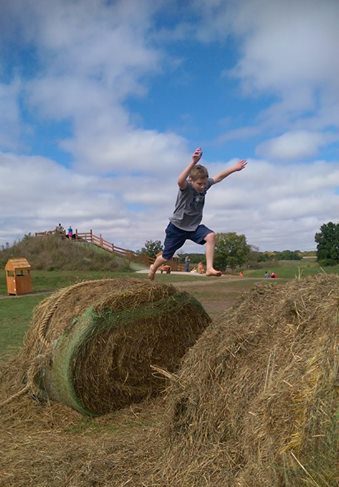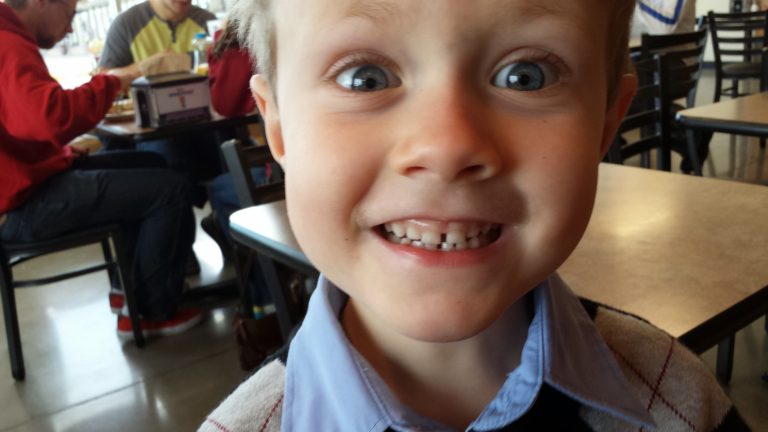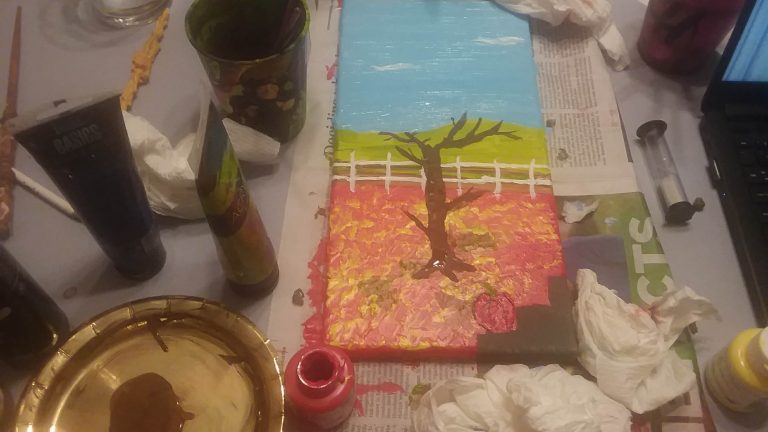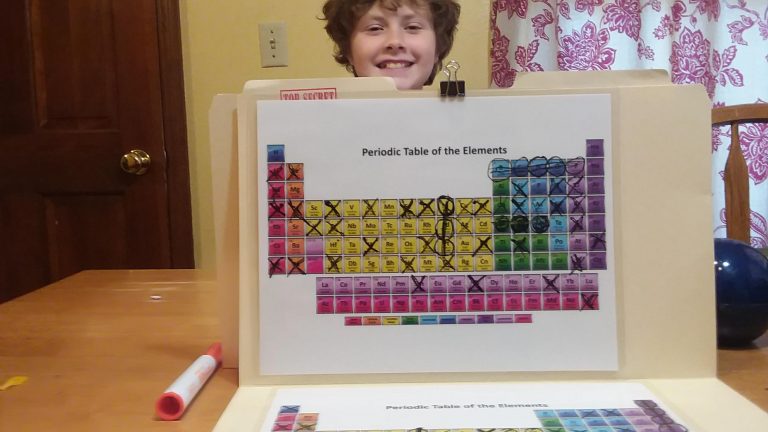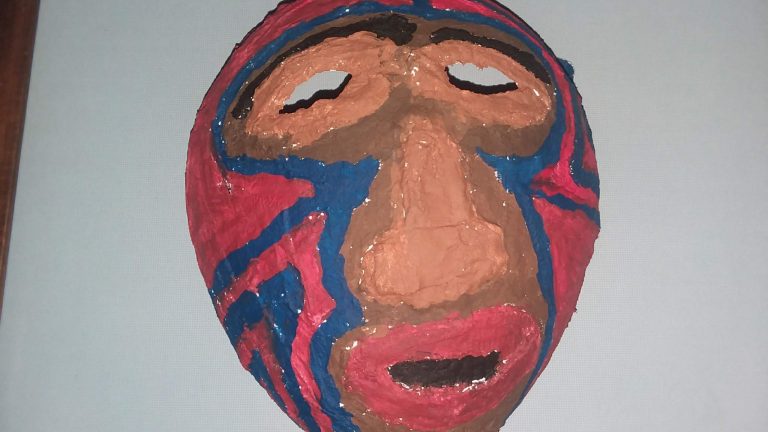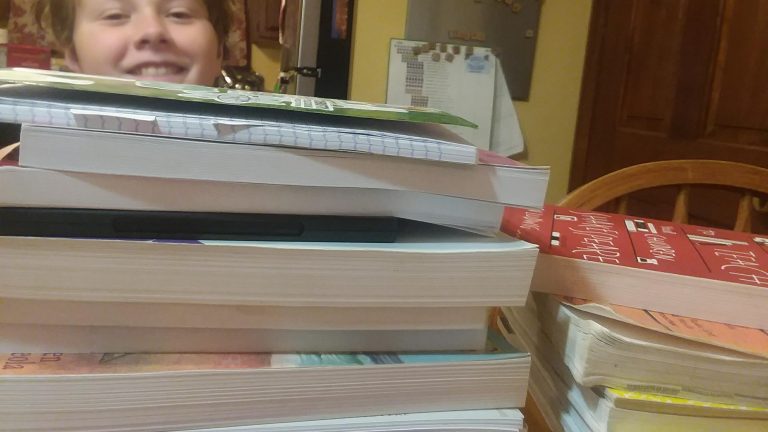Homeschool Kindergarten? You can do this!
You can do this. Homeschooling Kindergarten can be as simple or as complicated as you would like. I would recommend simple. 🙂
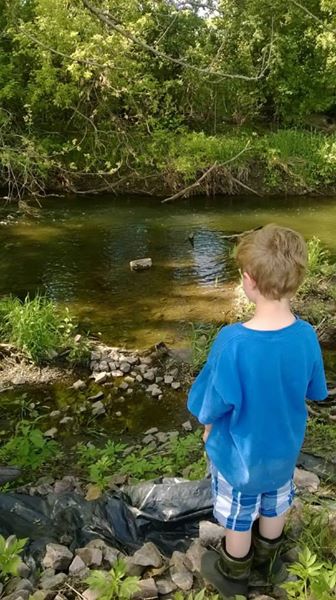
When my son started kindergarten at home he had just turned six and had been reading for several years. If your child is not reading, not to worry. There are many great reading programs available for homeschooling. You can use our method as detailed in “How I taught my toddler to Read” or you can find a reading curriculum.
I think what worked best was that everything we were learning my son had a hand in. He was either moving the calendar, dropping a marble in the jar, writing a number on a number line, moving the weather arrow or placing a sticker on a chart. It kept him involved in the learning and gave him a physical action for much of his day.
In kindergarten we had a schoolroom in our house. This only lasted the one year. I did not like being trapped in one room. I know that a lot of moms like the use of a schoolroom. It does help with containing the homeschool mess.
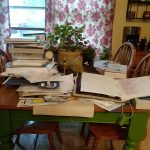
Morning 9am- 10am
I started our Kindergarten day at 9 am. This gave us about an hour each morning to have breakfast, get dressed and make beds.
The first hour of the day was a bit of a morning routine. Depending on the exact time of our start, JV would set a faux clock to the time we started. He then repeat what time the clock represented. For example, maybe we didn’t start until 9:05, JV would set the clock and we would say it is 5 minutes past 9 O’clock am. We did this each hour, pointing out that at lunch time we switched from am to pm.
We started our day with the Pledge of Allegiance and a prayer.
Next we would head over to our pocket calendar. JV changed the calendar each day. He moved the “Today” tag, and the tags labeled “Yesterday” and “Tomorrow”. He then pointed to the month, day and year while saying each. For example, ” Yesterday was January 2, 2015; Today is January 3rd 2015, Tomorrow will be January 4th, 2015. The tags used in the pocket calendar were large tongue depressors that I had written the words “Today”
” Yesterday” and “Tomorrow” with a black marker.
In large print letters I wrote out each month of the year on construction paper and laminated them individually. I hung these on the wall in a vertical line starting at the top with January and ending at the bottom with December. Once we were done with the calendar we sang the months of the year while JV used a dowel to point to each month as we sang them.
Once we were done with the months of the year and the calendar we moved on to weather.
First we would take a look outside and check out the weather.
I made a pie chart with all the different types of weather. I laminated it and hung it with a thumb tack holding the spinning arrow in the center of the chart. JV would move the arrow to the pie slice with the day’s weather.

We also had a chart labeled with corresponding types of weather as shown on the pie weather chart. Once JV moved the arrow to the correct daily weather he would then place a sticker for that day on the chart in the column for that specific weather. The total number of stickers at the end of the month in each column represented the number of days we had the specific type of weather. Once a few months passed we compared each month to the months before looking to see which month had more or less of each type of weather. Which then segued into seasons.
| Windy | Tornado Warning | Cloudy | Rainy | Sunny | Thunderstorm | Snowy | Sleet |
Next we added the “next” number on our number line. JV wrote the number and added a clear marble to the marble jar (when we got to the 100th day he added a blue marble). Pointing to each number on the number line starting at the number 1 we read the numbers out loud together (basically counting by ones).
I then asked JV, “How many marbles are in the jar?” He would tell me the number. I then asked “How do you know that?” He answered, ” The number of days are written on the number line”. I then asked, “How many days have we been in school?” He would answer. Next I asked, “How do you know that?” He’d answer something along the lines as we write each day on the number line.
10am-11am
Math was next. I used Saxon Math 1. We acted out every problem and I taught every lesson and completed both sides of each worksheet. It wasn’t until later, maybe half way through first grade we started only doing one side of the worksheets. Saxon Math k-3 requires a lot of parent involvement and is a bit of work for this age. We used the whole hour to complete Math.
I really like Saxon math, but I know it is not for everyone. I think our number line came from Saxon along with the clock setting idea. Saxon even had a worksheet that included seasons. The activity had the student find a tree or some type of vegetation and each season the plant or tree was visited and drawn to show the changes to the plant. JV picked a rhubarb plant. He was not interested in the 50 trees on our street. He already knew what those looked like each season. ;). I remember thinking…rhubarb? How boring, it’s alive and then it’s gone. But I was wrong, there are some seasonal changes. I didn’t push the trees, and their potential fall leaves, snow covered bare branches and budding spring leaves. 🙂 JV did fine with what he picked, because he picked it.
11am -12pm
Language Arts: Reading Bob Books, Bob Books sight word flash cards, letter writing and word writing.
John practiced writing five letters a day, and one sight word. I wrote the letter or the word on the dry erase board demonstrating how to write the letter. On his practice paper I would write the letter and a “traceable” letter with dotted lines. He then practiced the letter across the line.
As the year progressed we started writing and spelling nature vocabulary I had put together (ie habitat, ecosystem, and so on) along with words around our classroom (months of the year and weather words).
As far as spelling words we would look at the reading sight word flashcard, say the word, spell it out loud and then write it once on writing paper. As the year progressed we include the nature vocabulary and classroom words in to our spelling.
12pm- 1pm
Lunch/Free Play
1pm-2pm
Depending on the day we might do some art or a craft, go for a nature walk around the neighborhood or I might read out loud to JV.
Nature Walk and Journal: JV made his nature journal. I folded about 20 pieces of paper in half to form a book and stapled down the middle. JV Titled it Nature Journal and decorated the front. When we were out on our walk we would look at trees, leaves, bugs and rocks. When we arrived home JV drew pictures of what nature we saw when we were out.
In first grade we continued this, albeit JV would dictate what he saw in his own words, I would write them on the dry erase board and he would copy them in his journal. Maybe a sentence or two.
Art: Lots and lots of self directed drawing, coloring painting and creating.
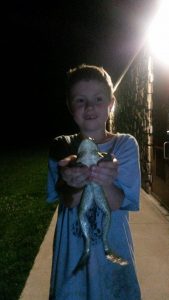
Although, our school day technically ended at 2 each day, the second half of our day was lunch and fun learning.
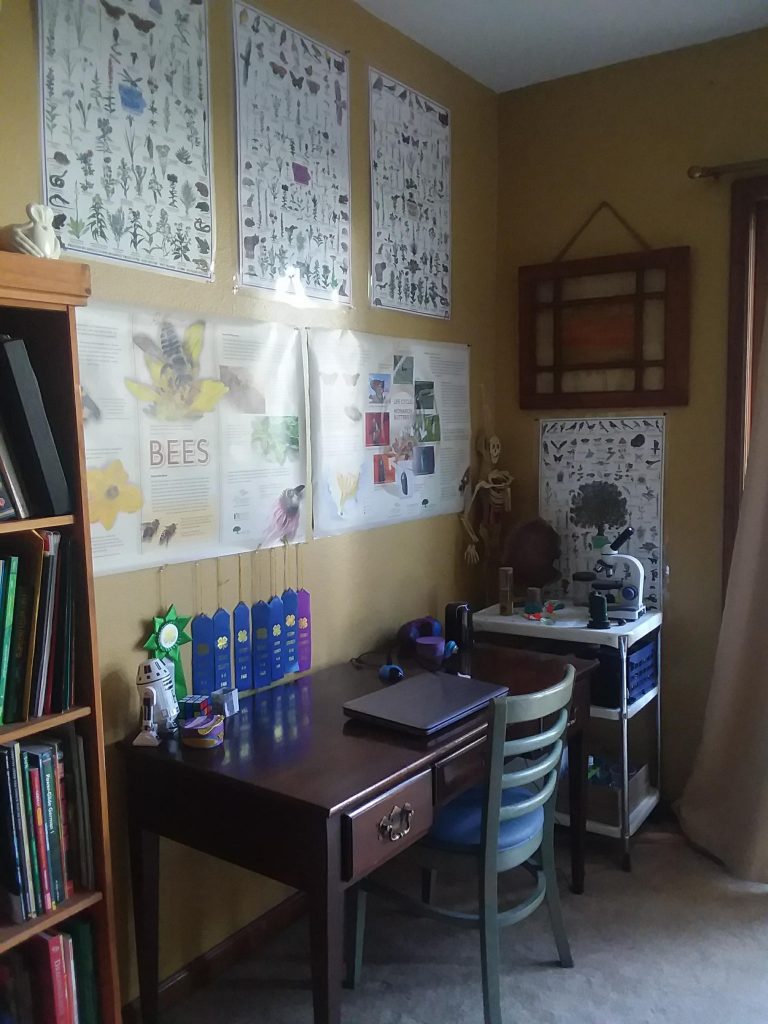
Below is a list of other activities we participated in during his kindergarten year.
Activities
JV participated in:
Our Homeschool Assistance Program (Kindergarten Enrichment Class)
Odyssey of the Mind Problem Solving Challenge
Our local library story times
German Club
Clover Kids
The County Youth Fair
Just like your choice to homeschool you can plan your day based on what works for your family. Don’t be discouraged if your days don’t go as planned. Just begin your next day where you left off the day before. Take your time and give yourself and your child grace to adjust to this new structured home life. ~ Bridget Anne
